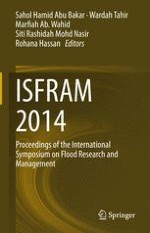2015 | OriginalPaper | Buchkapitel
Estimating Floods from an Ungauged River Basin Using GIUH-Based Nash Model
verfasst von : Bhabagrahi Sahoo, P. G. Saritha
Erschienen in: ISFRAM 2014
Verlag: Springer Singapore
Aktivieren Sie unsere intelligente Suche, um passende Fachinhalte oder Patente zu finden.
Wählen Sie Textabschnitte aus um mit Künstlicher Intelligenz passenden Patente zu finden. powered by
Markieren Sie Textabschnitte, um KI-gestützt weitere passende Inhalte zu finden. powered by
